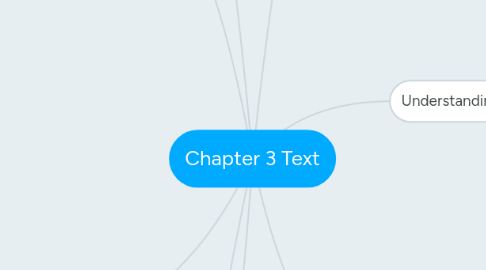
1. A typeface is a family of graphic characters, often with many type sizes and styles.
2. Computers and text
2.1. Bitmap font and Vector font
2.1.1. Bitmap font consist of a matrix of dots or pixels representing the image.
2.1.2. Vector fonts drawing use instructions and mathematical formulae to describe each glyph.
2.2. Rasterization
2.2.1. Font rasterization is the process of converting text from a vector description to a raster or bitmap description.
2.3. Anti-aliasing
2.3.1. Antialiasing blend the font into the background color.
2.3.2. It refers to the smoothing of jagged edges of drawn graphics and text to improve their appearance or readability.
2.4. Character set
2.4.1. Computers can only understand numbers, so an ASCII (American Standard Code for Information) code is the numerical representation of a character.
2.4.2. Each character is represented by a unique 7-bit binary code word.
2.5. Unicode
2.5.1. Unicode is a 16-bit architecture for multilingual text and character encoding.
3. Hypertext vs Hypermedia
3.1. Hypertext is a text which contains links to other texts.
3.2. Hypermedia is not constrained to be text-based.
4. A font is a collection of characters of a single size and style belonging to a particular typeface family.
5. Fonts and typefaces includes:
5.1. Font styles
5.1.1. Boldface
5.1.2. Italic
5.1.3. Underlining
5.1.4. Outlining
5.2. Font terminology
5.2.1. Baseline
5.2.1.1. the line on which the bases of characters are arranged
5.2.2. Cap height
5.2.2.1. cap height refers to the height of a capital letter
5.2.3. x-height
5.2.3.1. the distance between the baseline and the top of a lower-case letter x
5.2.4. Ascenders/descenders
5.2.4.1. strokes that rise above the x-height/drop below the baseline
5.2.5. Kerning
5.2.5.1. adjustment of space between certain pairs of letters (e.g. AV) to make them look more uniform
5.2.6. Tracking
5.2.6.1. adjustment of space for groups of letter
5.3. Cases
6. Understanding Fonts and Typefaces
6.1. Serif versus sans serif
6.1.1. A serif is the little decoration at the end of a letter stroke.
6.1.2. Sans serif fonts do not have decoration at the end of a letter stroke.
6.2. Cases
6.2.1. A capitalized letter is referred to as uppercase, while a small letter is referred to as lowercase.
6.2.2. Placing an uppercase letter in the middle of a word is referred to as an intercap or CamelCase.
7. Using Text Elements
7.1. Text elements used in multimedia are:
7.1.1. Menus for navigation
7.1.1.1. A user navigates through content using a menu.
7.1.2. Interactive buttons
7.1.2.1. A button is a clickable object that executes a command when activated.
7.1.3. Fields for reading
7.1.3.1. A document can be printed in one of two orientations: portrait or landscape.
7.1.4. HTML decuments
7.1.4.1. HTML stands for Hypertext Markup Language.
7.1.4.2. is the standard markup language used to create web pages.
7.1.5. Symbols and icons
7.1.5.1. Symbols are concentrated text in the form of stand-alone graphic constructs.
7.1.5.2. Icons are symbolic representations of objects and processes.
7.2. Choosing text fonts
7.2.1. consider legibility and readability
7.2.2. Avoid too many faces.
7.2.3. Use color purposefully.
8. Hypermedia Stricture
8.1. Navigating hypermedia structures
8.1.1. The simplest way to navigate hypermedia structures is via buttons.
8.2. Hypermedia structures
8.2.1. Links
8.2.1.1. Links sre connections between conceptual elements.
8.2.2. Nodes
8.2.2.1. Nodes are accessible topics, documents, messages, and content elements.
8.2.3. Anchors
8.2.3.1. An anchor is defined as the reference from one document to another document.
8.3. Hypertext systems are used for:
8.3.1. Electronic publishing and reference works
8.3.2. Technical documentation
8.3.3. Educational courseware
8.3.4. Interactive kiosks
8.3.5. Electronic catalogs

